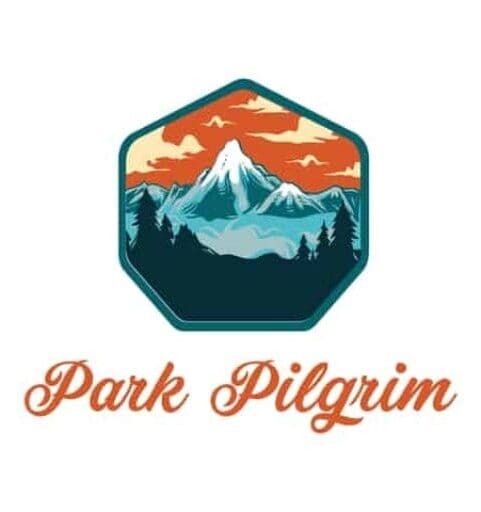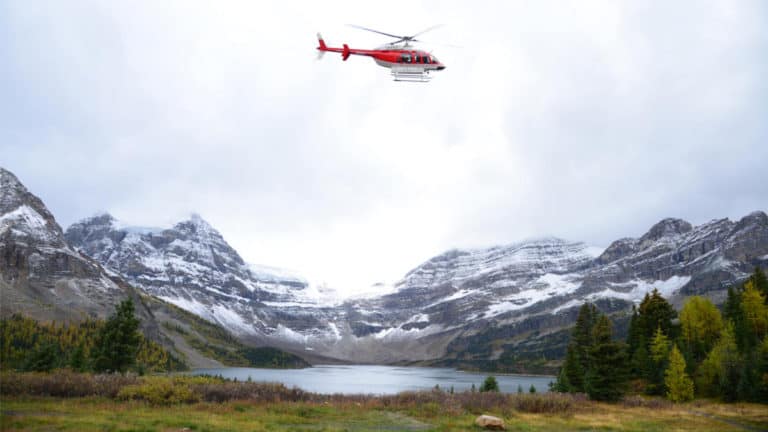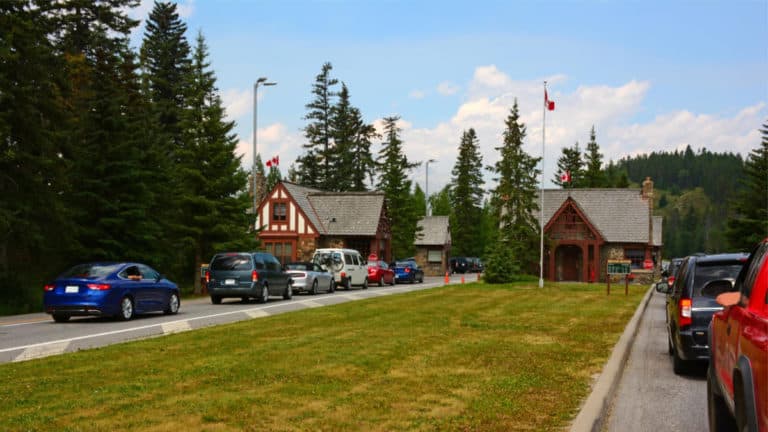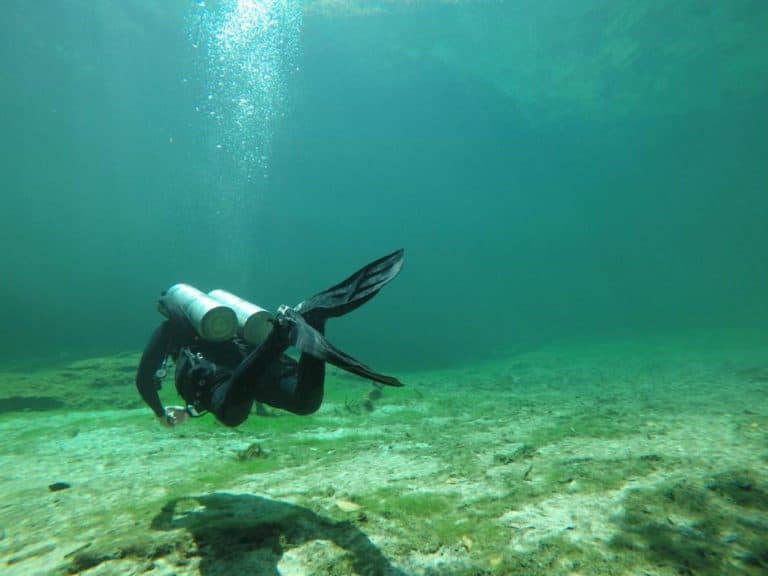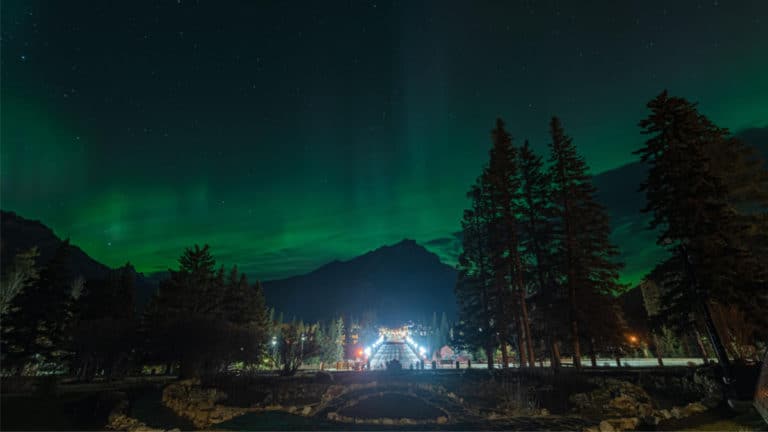The Pros and Cons of Visiting Banff in Spring and Fall
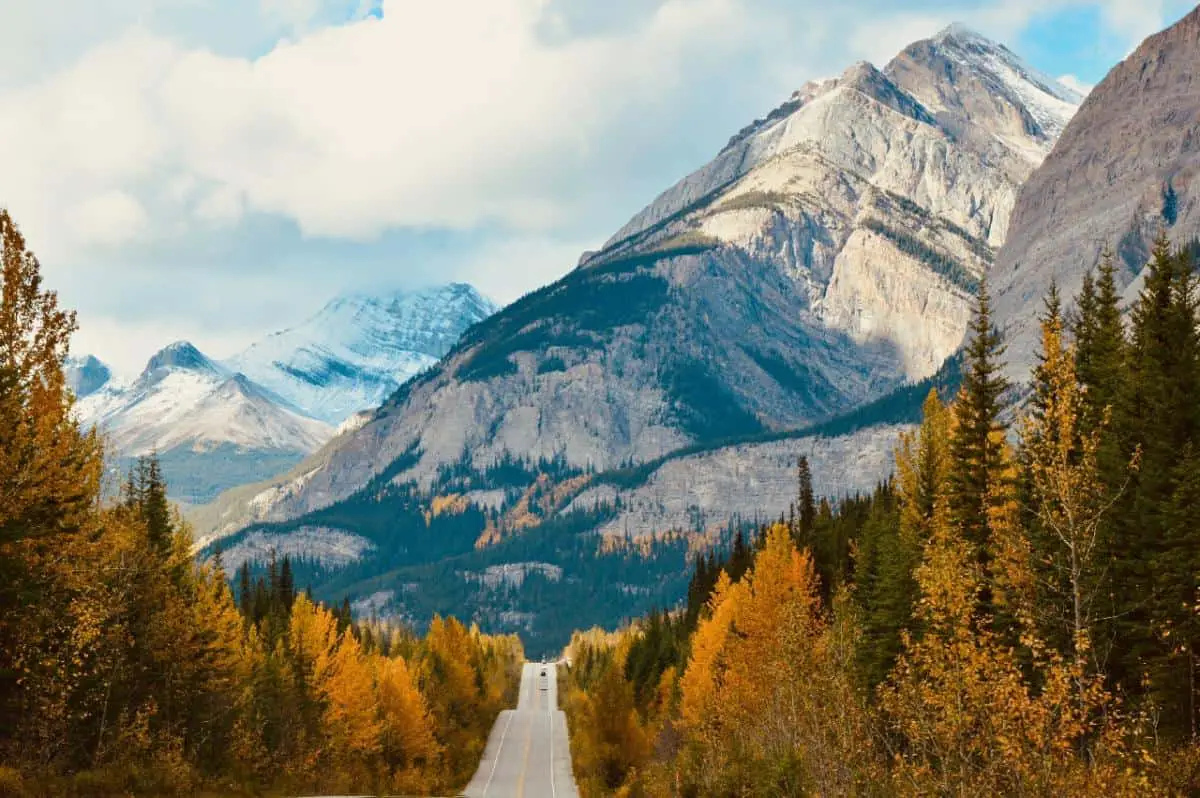
Banff has a high season in both summer and winter, which begs the question why to visit the park during the shoulder seasons of spring and fall? Below you’ll find the pros and cons of each season. It should help you make a decision if you’re considering visiting Banff during one of the shoulder seasons.
The reasons why summer and winter are high seasons in the park are obvious. It automatically implies that visiting the park in spring or fall is less obvious. Or, to put it another way: They are not the ideal seasons to visit Banff.
‘Not ideal’ doesn’t mean you should avoid visiting the Rockies during these months. There are some clear pros and cons which I set out to write down for you.
When Do Spring and Fall Start in Banff?
Before we move on to the pros and cons of visiting Banff in spring and fall, it’s good to know when these seasons begin and end.
The weather in the Rocky Mountains can be unpredictable and sometimes vary significantly from one day to another. However, the mountains do have defined seasons.
Spring in Banff National Park starts on March 20 and ends on June 21. Fall starts on September 15 and lasts until November 30.
Pros
There are definitely pros to visiting Banff in the shoulder seasons. Some are pretty specific and are a clear reason to go during these seasons. I listed them below.
Better Prices
This pro is obvious as touristic places have (much) lower prices in the off-season. This is true for plane ticket prices, hotel prices, and tours. Check the post I wrote about average prices in Banff if you want to check what differences to expect.
Because hotels, restaurants and tour organizers want to do business in the shoulder seasons as well, they often have great deals. Moreover, as there are fewer tourists, the demand for these deals is much lower.
The differences can be so significant that you can save hundreds of dollars for just a one-week stay in the park.
Have the Park to Yourself
In the shoulder seasons, the number of visitors to the park is much lower than in summer. Banff Avenue isn’t crowded, available tables in restaurants are abundant and you can park at Lake Louise and Moraine Lake without a hassle. It feels like you have the park to yourself, enhancing your experience.
See the graph below for the differences in average tourist numbers over the year. Averages have been calculated on the visitor numbers in the period 2010 – 2019.
Source: Seasonal Variation in Visitor Satisfaction and Its Management Implications in Banff National Park.

Based on these figures, we can conclude that:
- August is the busiest month of the year
- November is the quietest month of the year
- The fall shoulder season is much quieter than the spring shoulder season
- The spring months are busier than the winter months, the high season for skiing enthusiasts. Although April is also considered a skiing month.
Want to read about excellent activities in the town of Banff without spending a fortune? Then I recommend reading the post about cheap things to do in Banff.
Events
During the spring and fall, Banff hosts many events worth a visit. Below you’ll find a list of the most noteworthy events.
Spring
1. Banff Summer Arts Festival
Yes, it has summer in its name, but the Summer Arts Festival already starts in May, covering 150 events until August. Whether you’re a music fan or an art connoisseur, there’s something for everyone.
2. Homegrown Art Show
Every year, Banff exhibits the work of Bow Valley artists during this exposition in the Banff Town Hall. It lasts several weeks and opens in the first week of May.
3. Slush Cup
The Slush Cup is a steadfast tradition in Banff. Since 1928 (!), it’s been held annually on the last day of the season. Participants ski or snowboard down a run to skim across some frigid cold water and reach the end of the pool. Spectacle guaranteed!
4. Banff Marathon
New York, London, Tokyo, Berlin? All famous marathons against a famous backdrop, but nothing can beat the Banff Marathon. Running 42 clicks and a bit in the clean Rocky Mountains air while spectators cheer on participants. An annual favorite for locals and its festive atmosphere appeals to tourists as well.
Fall
1. Banff Centre Mountain Film and Book Festival
The world-famous Banff Centre calls it its ‘flagship program’ and ’a celebration of mountain culture’. The event brings together the best books and films from around the world in a spirit of adventure. Highly recommended.
2. Banff Craft Beer Festival
Like to drink beer? Visit the Banff Craft Beer Festival. During this annual event. You’ll find Alberta-made craft beer and spirits to tantalize your taste buds during this yearly event. Just make sure you don’t drink too much – it’s sure tempting – or book a hotel in town…
3. Banff Christmas Market
It may seem that the Banff Christmas Market doesn’t belong in an overview of events in the fall, but it’s no mistake. This cozy event consists of three markets over three days, the first one already taking place in mid-November. Expect many artisanal vendors, an outdoor fire lounge, Santa’s House & Reindeer Stables and live music.
4. Banff Pride
Drag queens in the Rockies? Yes, Banff also has its own inclusivity festival to enhance its ambition to be a ‘welcoming community for residents and visitors’. It’s held at the beginning of October and hosts an open night mike and 30 restaurants participating in Taste the Rainbow with a Pride-themed cocktail or a dessert.
5. Lake Louise FIS Ski World Cup
Sport-minded people who like some top-notch skiing at the highest level should absolutely attend the Lake Louise FIS Ski World Cup. Every season, Lake Louise hosts the first World Cup competition of the year, attracting the world’s best skiers to this beautiful spot on the globe.
Wildlife Viewing in Spring
Maybe one of the most appealing reasons to visit Banff during the spring season: the wildlife. In April and May the snow starts to clear, and deer, bighorn sheep and elk come down to graze on the sappy grasslands.
You are likely to see them around the town of Banff. You might also spot the occasional bear as they come out of their hibernation. Your best chances of seeing wildlife are at dusk and dawn. During these times of the day, wildlife is most active.
Want to know more about wildlife in the park? In that case I recommend the comprehensive guide to wildlife in Banff National Park on this site.
Foliage Magic
This pro one obviously pertains to the fall season. Although the Rocky Mountains are predominantly clad with pine trees, there are still many deciduous trees whose leaves turn color in fall.
Especially larch trees (a coniferous tree like a pine tree, but this one turns color) are known for their spectacular and unique colors in fall. They turn to an ‘orangey’ or amber color in the fall. This season is typically short and can only last two to three weeks. If you’re eager to see Banff in its spectacular autumn colors, you’d want to visit the park somewhere between the last week of September and the first two weeks of October.
Another pro of visiting Banff in the spring or fall is that the risk of wildfire is much lower than in summer. Want to read more about this topic? Then read the post about wildfires in Banff National Park.
Cons
Unfortunately, there are also some cons to visiting Banff National Park in spring or fall. Read on, to find out what those are and whether they matter to you or not.
Low Temperatures
This one seems obvious. Still, many people have no idea how cold the Rockies can be well in spring or how cold it can get in fall, for that matter. Let’s get some facts sorted so you know what I’m talking about.
Average spring temperatures:
| MONTH | AVERAGE | AVERAGE HIGH | AVERAGE LOW |
|---|---|---|---|
| April | 5°C (40°F) | 8°C (47°F) | -3°C (26°F) |
| May | 9°C (48°F) | 7°C (45°F) | 1°C (34°F) |
| June | 13°C (55°F) | 18°C (64°F) | 5°C (41°F) |
Average fall temperatures:
| MONTH | AVERAGE | AVERAGE HIGH | AVERAGE LOW |
|---|---|---|---|
| September | 11°C (51°F) | 16°C (61°F) | 3°C (37°F) |
| October | 6°C (42°F) | 9°C (48°F) | -2°C (29°F) |
| November | -3°C (28°F) | 0°C (32°F) | -8°C (17°F) |
Want to know more about temperatures in Banff? In that case, recommend reading the post about the general weather in Banff.
Frozen Lakes
This one is a huge letdown for many unsuspecting visitors. The lakes in the park remain frozen for the majority of spring. Of course the park’s Lakes are beautiful year-round, but their sparkling beauty is only revealed at the end of May at the earliest. Before that, expect a greyish landscape of rocks, snow and ice to dominate the view.
Road Closures
Banff knows a lot of snowfall, which causes many road closures, which means you cannot visit Moraine Lake. Other reasons for closure can be a risk of avalanches, protecting sensitive habitats, and minimizing wildlife disturbance.
The exact dates may vary per season, but the roads and trails on the list below are temporarily closed every year.
| ROAD/TRAIL | WHEN | ACTIVITY | NOTES |
|---|---|---|---|
| Allenby Pass | August 1 to September 30 | No hiking | |
| Bow Valley Parkway / Highway 1A | March 1 to June 25 | – | Daily between 8 pm and 8 am. |
| Banff Legacy Trail | Early fall to early spring | – | – |
| Fairmont Banff Springs Golf Course Road | November 1 to May 1 | – | – |
| Healy Pass / Sunshine Meadows / North of Citadel Pass | Spring to Fall | No hiking off trail | – |
| Healy Pass / Sunshine Meadows Area | Spring to Fall | No horseback riding | – |
| Lake Louise – Cross Country Ski Trails | November 1 to April 30 | No cross-country skiing | – |
| Lake Minnewanka – Sheep Point | Spring | – | – |
| Lake Minnewanka | July 10 to September 15 | No biking | – |
| Minnewanka Loop Road (western section) | November to May | – | – |
| Moraine Lake Area | July to October (dates may vary) | – | – |
| Moraine Lake Road | Mid-October to June | – | – |
| Spray River Valley | April 15 to November 15 | – | – |
Source: Parks Canada.
Driving Conditions
Driving conditions in the shoulder seasons can be dangerous. The weather can change suddenly, which may take you by surprise, and snow and melting water can cause slippery roads.
Be especially cautious on bridges and near water, which may have black ice, a thin coating of ice on roads. On top of that, the sun sets early in spring and fall, limiting proper driving time.
If you want to check road conditions before heading out, go to the 511.alberta.ca and check the webcam images.
On a positive note: the drive from Calgary to Banff is easy, as it’s a surprisingly flat and wide freeway that’s well-maintained year-round.
Limited Camping Opportunities
Due to the weather circumstances and the public demand, camping in the park is minimal until mid to late May. Only the Tunnel Mountain Village 2 and the Lake Louise Trailer campgrounds are open year-round. All the other campgrounds in the park are closed until at least late May.
Limited Activities
Spending time in the spring or fall could mean fewer hiking opportunities, depending on when you visit during one of the shoulder seasons.
Until the end of May, many trails are closed or limited to lower elevation paths, more or less forcing you to amble around the Bow Valley bottom. Not that that is a bad thing, by the way. Also, tea houses on higher altitude trails remain closed in spring.
Furthermore, in spring, boat tours on Lake Minnewanka don’t start until May, and many attractions and activities on the Icefields Parkway are closed, so possibilities are limited.
Want to read why Banff is the ultimate place for your next vacation? Read the article 10 Reasons to Vacation in Banff and Have the Time of Your Life
Other articles you might be interested in:
• How to Make Sure Mosquitoes Don’t Ruin Your Stay in Banff
• Plan Your Banff Itinerary – Know the Distances
• How Much Does a Banff Vacation Cost in 2023? (Crazy Numbers)
